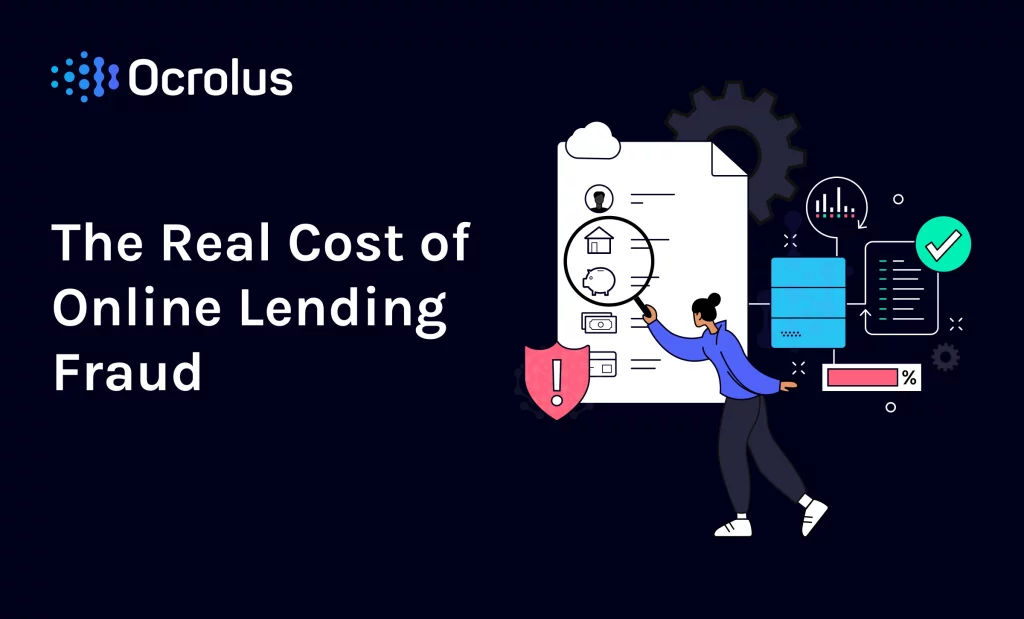The Real Cost of Online Lending Fraud

The below blog post first appeared on LendIt.com.
According to a study by Experian, 63% of businesses experienced the same or more fraud losses in 2018, with a plurality of 33% experiencing higher losses. In online lending, the trend was particularly pronounced.
The cost of online lending fraud has increased 8.1% since 2017. Furthermore, the cost per dollar of online lending fraud is greater than, and growing at a faster rate than, e-commerce fraud or retail fraud.
Fraud impacts online lending of every kind. Online lending fraud happens in the form of identity fraud, account takeover, image manipulation, and many other illicit schemes. Fraudsters are always developing new techniques to rip off lenders. And a sizeable portion of fraud goes undetected, even after it causes losses.
All of this suggests that fraud is a serious problem in the online lending space – and perhaps even more widespread than lenders currently understand.
Why Do Fraudsters Target Online Lenders So Aggressively?
With all the other scams out there, why do fraudsters target online lending so aggressively?
The speed, ease, and light touch of online loan applications make online lending fraud relatively simple to execute. The loan application process takes a matter of minutes, and doesn’t involve any in-person steps. Fraudsters can use software to easily forge documents and data. Bad actors can hide behind the barriers inherent to the internet and execute low cost, high reward financial scams – all without ever having to leave their houses.
The epidemic of data breaches has also made identity fraud easier to harness. Billions of people were affected by data breaches and cyberattacks in 2018 – 765 million in the months of April, May, and June alone. Fraudsters can buy identifying information on the Dark Web, or hijack the personal data of people they know on some level, without much effort.
Additionally, fraudsters often face minimal repercussions for their crimes. Lenders can blacklist fraudsters. But legal consequences are uncommon. Online lending fraud could lead to federal prosecution under 18 U.S. Code §§ 1001–1040, along with associated state laws. However, indictments are hardly ever filed on a case-by-case basis.
US Attorneys rarely take on fraud cases that involve less than a $1 million dollars. State and local police often hesitate to investigate losses under $10,000 – and even then, they have limited resources and a huge backlog of cases. Lenders can attempt to recoup costs through the civil court system, but this is often too expensive and time consuming.
That’s why when it comes to online lending fraud, the best offense is a good defense. Due diligence upfront is the only recourse lenders have to keep fraudsters from harming their businesses.
How Does Online Lending Fraud Cost Lenders?
Understanding why fraudsters engage in online lending fraud is fairly straightforward. What’s more complicated is measuring the cost of such fraud. But there are a number of studies that have quantified the impact, on both macro and granular scales.
First, consider the global prevalence of online lending fraud. According to LexisNexis Risk Solutions, there were at least 1 million cyber attacks targeting online lending transactions in 2016, with potential losses of up to $10 billion. This suggests that fraudsters are not merely chipping away at profit margins. They are posing a serious threat to the online lending ecosystem as a whole.
To break down the cost with more specificity: for every dollar of online lending fraud in 2018, lenders paid $3.05 in costs.
This is because when fraudsters inevitably default, lenders lose much more than the principal loaned. They also lose money on customer acquisition costs, underwriter compensation, lenders’ cost of their own capital, missed interest payments, and fees paid to debt collection agencies, among other expenses.
And ironically, fraud prevention measures can also chew into potential earnings. Fraud false positives come in at 13% of declined transactions. Faulty fraud detection actually excludes desirable borrowers. That means lenders are hit by both fraud losses and missed opportunities simultaneously.
The costs of online lending fraud are real and growing. So what can your company do to combat fraudsters?
Learn more about our document tampering detection solution and get in touch with our team today.


